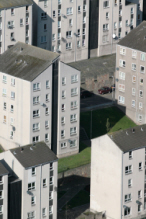Drones and the housing sector
- Details
 The use of drones in the housing sector raises data protection concerns, argues Daniel Milnes.
The use of drones in the housing sector raises data protection concerns, argues Daniel Milnes.
Walsall Housing Group is reported to have become the first housing association in the country to secure permission from the Civil Aviation Authority to use drones in order to inspect properties. The group has claimed that the use of drones could save it around £20,000 a year to inspect roofs of its properties without needing to erect scaffolding. The use of this equipment is certainly innovative but not all housing associations view it in the same light. For instance Bromford Group is reported to have ruled out using drones for maintenance inspection as they do not view them as being cost effective.
What are drones?
Unmanned Arial Systems (UAS) is the system under which different unmanned aerial vehicles or otherwise known as drones operate. They can be fitted with a camera enabling the user to record whilst the drone is airborne.
What are the legal obligations?
Obligations arise depending on the purpose for which drones are being used. According to the Information Commissioner’s Office (ICO) individuals who use drones should do so in a responsible way to respect the privacy of others. If a drone has a camera, potentially it is covered by the Data Protection Act 1998 and individuals using drones for domestic use should follow the guidance provided by the ICO to ensure that they do not cause intrusion into the privacy of others.
If a drone is used for commercial purposes, individuals or organisations are under an obligation to comply with the data protection principles. The ICO’s CCTV Code of Practice provides that as drones are highly privacy intrusive, it is important for users to have very strong justifications for their use. In particular, an organisation may undertake a robust privacy impact assessment to determine whether using a drone is the most appropriate method.
The CCTV Code of Practice also provides a number of other relevant recommendations to enable a data controller to comply with its obligations such as:
- limiting the recording based on the purpose for which you are recording;
- data captured should be held securely;
- data is only accessed by those who require such access;
- data is retained only for the minimum period necessary for its purpose;
- consider incorporating privacy by design methods, which means considering devices that can focus on only one place or have restricted vision; and
- consider ways to provide fair processing information to those likely to be affected.
Implications for the housing sector
The use of drones may have cost benefits, which housing associations should consider especially in challenging times affecting the sector with welfare cuts and the possible extended Right to Buy.
As part of that cost benefit analysis, housing associations should also consider their obligations under the Data Protection Act 1998. This is necessary because using drones as part of a maintenance program may result in recording data beyond the purpose of maintenance. As such taking the decision to use drones should involve an in depth assessment including ensuring that it has appropriate policies in place, using the data for the purpose it was collated only and ensuring security of the data.
While using drones may result in saving money in maintenance in the short term, if legal obligations are not seriously considered it could cost a housing association much more if it resulted in a data protection breach. A breach could occur where data are used beyond its purpose affecting the privacy of its tenants, if data is not held securely or is retained for longer than required, all of which could result in regulatory action.
Daniel Milnes is a partner at Forbes Solicitors. He can be contacted on 01254 222313 or

























